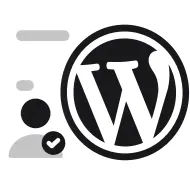Quick Summary:
- Fast, secure sites are essential for business growth.
- Follow detailed checklists for speed and security audits.
- Active, ongoing management ensures your site stays optimized.
- Prioritize fixes, re-test, and leverage results for marketing.
Table of Contents
- Unlock the True Potential of Your WordPress Website with a Free Speed & Security Audit
- What Is a WordPress Speed & Security Audit?
- Key Components of a WordPress Audit
- Why You Need a WordPress Speed & Security Audit
- 1. Your Website Might Be Slower Than You Think
- 2. Hidden Security Vulnerabilities Can Be Catastrophic
- 3. Your Code Could Be Holding You Back
- 4. Peak Traffic Might Crash Your Site
- 5. You’re Losing SEO Value Without Knowing
- Signs You Need a WordPress Audit
- How a WordPress Speed & Security Audit Works
- Step 1: Initial Consultation & Access Setup
- Step 2: Comprehensive Site Scan
- Step 3: Manual Code & Configuration Review
- Step 4: Detailed Audit Report
- Step 5: Free Consultation on Fixes
- Benefits of a WordPress Speed & Security Audit
- 1. Boost Conversions and Retention
- 2. Improve SEO Rankings
- 3. Prevent Hacks and Downtime
- 4. Save Maintenance Costs
- 5. Enhance User Experience
- Tools Used in WordPress Speed & Security Audits
- When Should You Get an Audit?
- Common Issues Found During Audits
- Why Choose Qrolic Technologies for Your WordPress Audit
- Why Businesses Trust Us
- Our Clients Include
- Real Results from Qrolic’s WordPress Optimization
- Conclusion
Unlock the True Potential of Your WordPress Website with a Free Speed & Security Audit
Your WordPress website might look great on the surface, but hidden beneath could be performance bottlenecks, security vulnerabilities, or outdated configurations that silently harm your traffic, conversions, and brand trust. A Free WordPress Speed & Security Audit helps you uncover these invisible issues and gives you a clear, actionable roadmap to optimize and protect your digital presence.
What Is a WordPress Speed & Security Audit?
A WordPress Speed & Security Audit is a detailed technical assessment of your website’s performance, health, and security posture. It evaluates how fast your website loads, how secure your files and plugins are, and how efficiently your site handles traffic and user requests.
Think of it as a full body check-up for your website — identifying potential problems before they turn into costly failures.
Key Components of a WordPress Audit
- Page Speed Analysis: Measures load times, Core Web Vitals (LCP, CLS, FID), and overall site responsiveness.
- Security Check: Looks for malware, vulnerabilities, weak passwords, outdated themes/plugins, and misconfigurations.
- Server & Hosting Evaluation: Analyzes hosting resources, caching, and CDN setup.
- Code Quality Review: Identifies bloated, outdated, or redundant code slowing down performance.
- Database Optimization: Ensures your database is clean, indexed, and optimized for queries.
- SEO Health Check: Tests technical SEO factors that impact search rankings.
Why You Need a WordPress Speed & Security Audit
Even the best-looking websites can hide serious performance or security flaws. Here’s why every business needs a periodic audit — especially if your site is business-critical.
1. Your Website Might Be Slower Than You Think
A slow site can destroy conversions. Every extra second in load time can reduce conversions by up to 20%. Google prioritizes fast websites — if your Core Web Vitals are poor, your rankings will drop.
2. Hidden Security Vulnerabilities Can Be Catastrophic
Outdated plugins, weak passwords, or insecure file permissions are open doors for hackers. A single attack can lead to data loss, blacklisting, or customer distrust.
3. Your Code Could Be Holding You Back
Messy or old code can slow down updates, increase bugs, and limit scalability. A technical audit pinpoints inefficiencies so you can modernize effectively.
4. Peak Traffic Might Crash Your Site
If your site isn’t optimized for concurrent users or caching, heavy traffic spikes can cause downtime. An audit ensures your infrastructure is built to handle scale.
5. You’re Losing SEO Value Without Knowing
Slow sites, broken links, or insecure connections can tank your rankings. A WordPress audit helps identify and fix these SEO blockers quickly.
Signs You Need a WordPress Audit
If you’ve noticed any of the following, it’s time for a Free WordPress Speed & Security Audit:
- Your website takes longer than 3 seconds to load
- You recently experienced a hacking attempt or malware warning
- Plugins or themes break after every update
- You’re unsure about hosting or caching configurations
- Your organic traffic is dropping despite consistent content efforts
- Users complain about poor experience or timeouts
How a WordPress Speed & Security Audit Works
At Qrolic Technologies, we follow a structured, transparent, and result-driven process that ensures every part of your WordPress setup is analyzed and improved.
Step 1: Initial Consultation & Access Setup
We understand your business goals, target audience, and performance expectations. Then we securely gather necessary access (or staging credentials).
Step 2: Comprehensive Site Scan
Using professional-grade tools, we perform:
- Speed tests across devices and geographies
- Security vulnerability scans
- Plugin and theme integrity checks
- Server response and caching evaluations
Step 3: Manual Code & Configuration Review
Our WordPress Experts manually review your codebase, database structure, and hosting setup to find inefficiencies automated tools miss.
Step 4: Detailed Audit Report
You’ll receive a detailed report with metrics, screenshots, and practical recommendations categorized by priority — from quick wins to long-term improvements.
Step 5: Free Consultation on Fixes
We walk you through each finding, explaining what it means and how to fix it. You can implement the changes yourself or choose our team for end-to-end optimization.
Benefits of a WordPress Speed & Security Audit
1. Boost Conversions and Retention
Faster websites lead to lower bounce rates and higher engagement.
2. Improve SEO Rankings
Google’s ranking algorithms reward optimized, secure websites with better visibility.
3. Prevent Hacks and Downtime
Regular audits close security gaps before they’re exploited.
4. Save Maintenance Costs
Finding and fixing issues early prevents expensive emergency fixes later.
5. Enhance User Experience
Speed and stability directly impact trust, professionalism, and overall satisfaction.
Tools Used in WordPress Speed & Security Audits
Qrolic Technologies utilizes a combination of industry-leading tools and custom scripts for accuracy and precision:
- Google PageSpeed Insights
- GTmetrix
- WebPageTest
- WPScan (for vulnerabilities)
- Sucuri SiteCheck
- Query Monitor
- New Relic
- Wordfence
When Should You Get an Audit?
You should schedule a WordPress speed and security audit:
- Every 6 months for high-traffic websites
- After major updates (core, theme, or plugin)
- Before launching new campaigns or features
- After a migration or hosting change
Regular audits keep your website healthy, compliant, and high-performing all year round.
Common Issues Found During Audits
| Issue Type | Example Problem | Potential Risk |
|---|---|---|
| Performance | Unoptimized images, no caching | Slow load times, user drop-offs |
| Security | Outdated plugins or weak credentials | Malware or data breaches |
| SEO | Missing meta tags, 404 errors | Loss of organic visibility |
| Database | Large post revisions, transient data | Sluggish backend |
| Hosting | Shared server limitations | Frequent timeouts |
Why Choose Qrolic Technologies for Your WordPress Audit
At Qrolic Technologies, we’re not just another agency – we’re WordPress core contributors with over 7 years of experience managing and optimizing complex websites for enterprises and startups alike.
Why Businesses Trust Us
- Exclusive WordPress Agency: 100% focused on WordPress — no distractions.
- Performance-Driven Results: We’ve helped clients reduce load times from 30 seconds to 4 seconds.
- Security First Approach: Our proactive measures protect clients from vulnerabilities and attacks.
- Transparent Communication: You’ll always know what we’re doing and why.
- Long-Term Partnership: We care about your growth, not just project delivery.
Our Clients Include
91mobiles • Financer.com • VIC-TEK • Chartered Club • GrowOwn • Active Steel Forge
Real Results from Qrolic’s WordPress Optimization
Case Study 1:
“From 30 seconds to 4 seconds — how we transformed a data-heavy WordPress Site for a global finance brand.”
Case Study 2:
“Achieving blazing-fast loading times: How Qrolic reengineered a High-Traffic WordPress Site for exceptional speed and scalability.”
Our proven strategies deliver measurable results — faster load times, improved security, and higher conversions.
Conclusion
Your website is your business’s most valuable online asset. But without regular optimization and protection, it can quickly turn into a liability. A Free WordPress Speed & Security Audit is the easiest way to discover hidden problems, improve your site’s health, and unlock better performance — all without spending a dime.
At Qrolic Technologies, we make WordPress work for you — not against you.
Start today. Experience the Qrolic difference.






